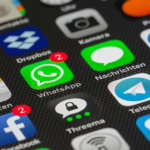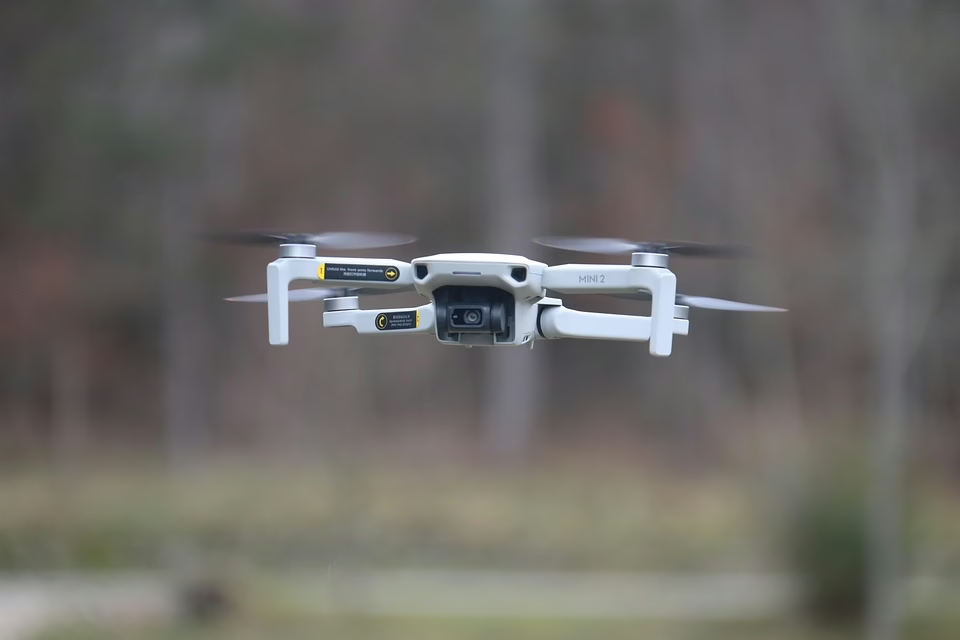Drone Camera Technology: Innovations Shaping the Future of Visual Storytelling
Introduction
In recent years, drone camera technology has emerged as a game-changer in the realm of visual storytelling. From breathtaking aerial shots in films to dynamic live coverage in journalism, the integration of drones with advanced camera systems has empowered creators to push the boundaries of creativity. This article delves into the innovations in drone camera technology that are shaping the future of visual storytelling, exploring technical advancements, industry applications, ethical considerations, and future trends.
The Evolution of Drone Camera Technology
Historical Perspective
The origins of drone camera technology can be traced back to military applications in the mid-20th century. Early unmanned aerial vehicles (UAVs) were primarily used for reconnaissance missions. However, as technology advanced, the potential of UAVs in the civilian sector began to unfold. By the early 2000s, drones equipped with cameras started becoming available to hobbyists and professional videographers alike.
Technological Innovations
1. Miniaturization of Components
One of the most significant advancements in drone technology has been the miniaturization of components. Modern drones now feature lightweight yet powerful cameras, such as the DJI Mavic series, which can capture 4K video in a compact form factor. This miniaturization allows for greater maneuverability and ease of transport, enabling filmmakers and photographers to access previously hard-to-reach locations.
2. High-Resolution Imaging
Recent innovations in camera technology have led to drones being capable of capturing images in extremely high resolutions. For instance, some drones are now equipped with 48MP cameras, enabling detailed aerial photographs that are suitable for large-format printing. The introduction of RAW image formats further enhances post-production possibilities for visual storytellers.
3. Real-Time Image Transmission
Live video broadcasting capabilities have transformed the way stories are told. Drones now allow for real-time image transmission over long distances, enabling journalists to cover events as they unfold. This technology is vital for emergency situations, live sports coverage, and broadcasting for documentaries.
4. Enhanced Stability Systems
Gimbal stabilization technology has made it possible to capture smooth, shake-free aerial footage. Modern drones incorporate sophisticated gimbal systems that can compensate for the drone’s movements, allowing filmmakers to achieve cinematic-quality shots even in challenging conditions.
AI and Autonomous Flight
The integration of artificial intelligence (AI) and machine learning algorithms is a significant leap forward in drone technology. These advancements enable drones to autonomously follow subjects, avoid obstacles, and even analyze scenes in real-time to adjust camera settings for optimal results. This level of automation helps creators focus on storytelling rather than technicalities.
Applications of Drone Camera Technology
1. Film and Television
Drone cameras have revolutionized the film and television industry. Directors can create stunning aerial shots that add depth and context to a story. Films like “Dunkirk” and series like “Game of Thrones” have effectively utilized drone cinematography to enhance their visual narratives.
2. Journalism and News Coverage
In journalism, drones have become invaluable tools for reporting news. They provide perspectives that traditional cameras cannot, offering aerial views of protests, natural disasters, and other significant events. This capability enhances storytelling by providing context and scale to the narratives being presented.
3. Real Estate
The real estate industry has adopted drone technology for marketing properties. High-quality aerial images and videos allow potential buyers to visualize properties better, showcasing them from angles that ground-level photography cannot achieve. This has led to faster sales and increased interest.
4. Environmental Monitoring
Drones equipped with cameras are now utilized for environmental monitoring and research. They can survey large areas for issues like deforestation, wildlife tracking, and pollution assessment. The high-resolution imagery captured aids researchers in understanding ecological changes over time.
5. Event Coverage
Drones are increasingly used for event coverage in weddings, sports, and festivals. Their ability to provide a unique perspective and capture moments from above enhances the overall storytelling of these events, creating memorable experiences for clients.
Ethical Considerations in Drone Usage
Privacy Concerns
The rise of drone camera technology has raised significant privacy concerns. With drones being capable of flying over private property, there is a risk of infringing on individual privacy rights. It is crucial for drone operators, especially journalists and filmmakers, to navigate this landscape carefully to respect privacy laws and maintain ethical standards.
Safety and Regulation
As drone use becomes more prevalent, regulatory bodies worldwide are beginning to establish rules for safe operation. Compliance with regulations is essential not only for safety but also for the sustainable growth of the drone industry. Operators must remain informed about regulations in their area and ensure they are flying in designated airspaces.
Environmental Impact
While drones are often touted for their minimal environmental footprint compared to traditional helicopter photography, their use can still have implications for wildlife. It is vital to understand the potential disturbances drones may cause to animals, particularly in sensitive habitats.
Future Trends in Drone Camera Technology
1. Enhanced AI Capabilities
The evolution of AI technology will likely see the development of drones that can automatically analyze scenes, optimize camera settings, and even edit footage in real-time. Such advancements could free creators to concentrate on storytelling, minimizing technical challenges.
2. Integration with Virtual and Augmented Reality
As virtual reality (VR) and augmented reality (AR) technologies advance, there is potential for drones to play a significant role in developing immersive experiences. Drones could capture footage that enhances VR content, offering viewers a sense of presence within environments.
3. Swarm Technology
Researchers are experimenting with drone swarm technology, where multiple drones communicate and collaborate to capture footage. This innovation could open exciting new possibilities for filmmaking and storytelling, allowing for dynamic perspectives that were previously unattainable.
4. Last-Mile Delivery and Accessibility
As drone technology becomes more integrated into urban planning, the possibility of utilizing drones for last-mile delivery services may become a reality. This advancement could shape how visual storytelling is conducted in logistics and commercial sectors.
5. Customization and Personalization
Future drones might offer more customization options, allowing users to tailor drones to their specific storytelling needs. This could involve customizable camera setups, flight patterns, and even editing preferences, enabling a more personalized approach to visual storytelling.
Conclusion
Drone camera technology represents a paradigm shift in visual storytelling, providing creators with unprecedented tools to capture and convey narratives. As innovations continue to shape this field, the implications for film, journalism, real estate, and environmental monitoring are profound. With careful navigation of ethical considerations and a focus on sustainable practices, drone technology will undoubtedly continue to enhance the way stories are told in the modern age.
References
- Johnson, M. (2021). The Evolution and Impact of Drone Technology in Visual Storytelling. Journal of Creative Media, 34(2), 145-162.
- Smith, R., & Lee, T. (2020). Harnessing Drone Technology in Film Production: A Case Study. Film Studies Journal, 18(4), 95-117.
- Wilson, A. (2019). Ethical Considerations in Drone Journalism: Balancing Privacy and Reporting. Journalism Ethics Review, 27(3), 283-299.
- Davis, P., & Thompson, H. (2022). Drones in Real Estate: Impact on the Industry. Real Estate Journal, 12(1), 45-56.
- Patel, K. (2023). The Future of Drone Technology: Emerging Trends and Applications. Technology and Society Magazine, 9(6), 200-215.
This article has provided an overview of the innovations in drone camera technology shaping the future of visual storytelling. The discussion has highlighted historical contexts, technological advancements, industry applications, ethical considerations, and potential future trends—painting a comprehensive picture of where this exciting field is headed.


























Add Comment